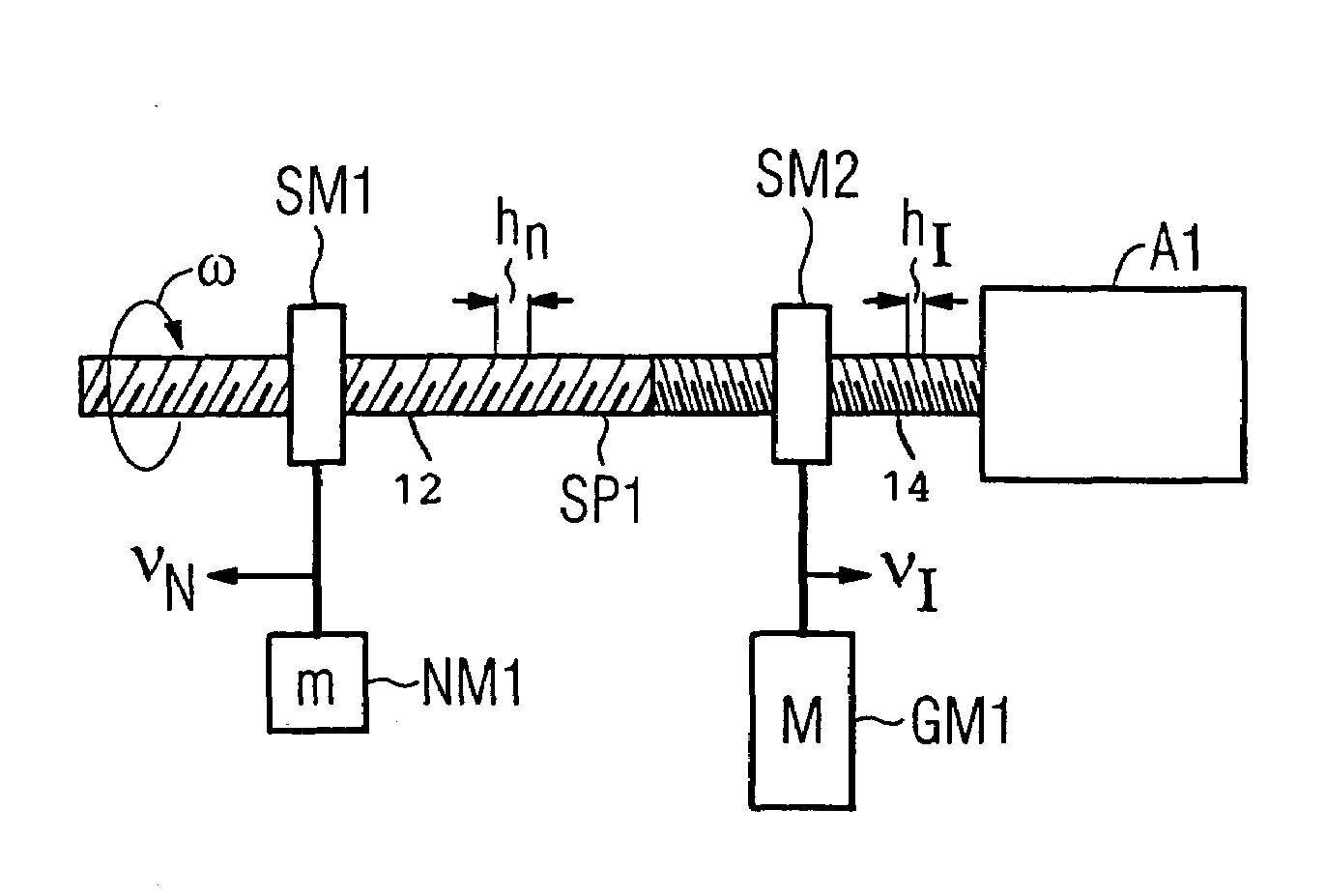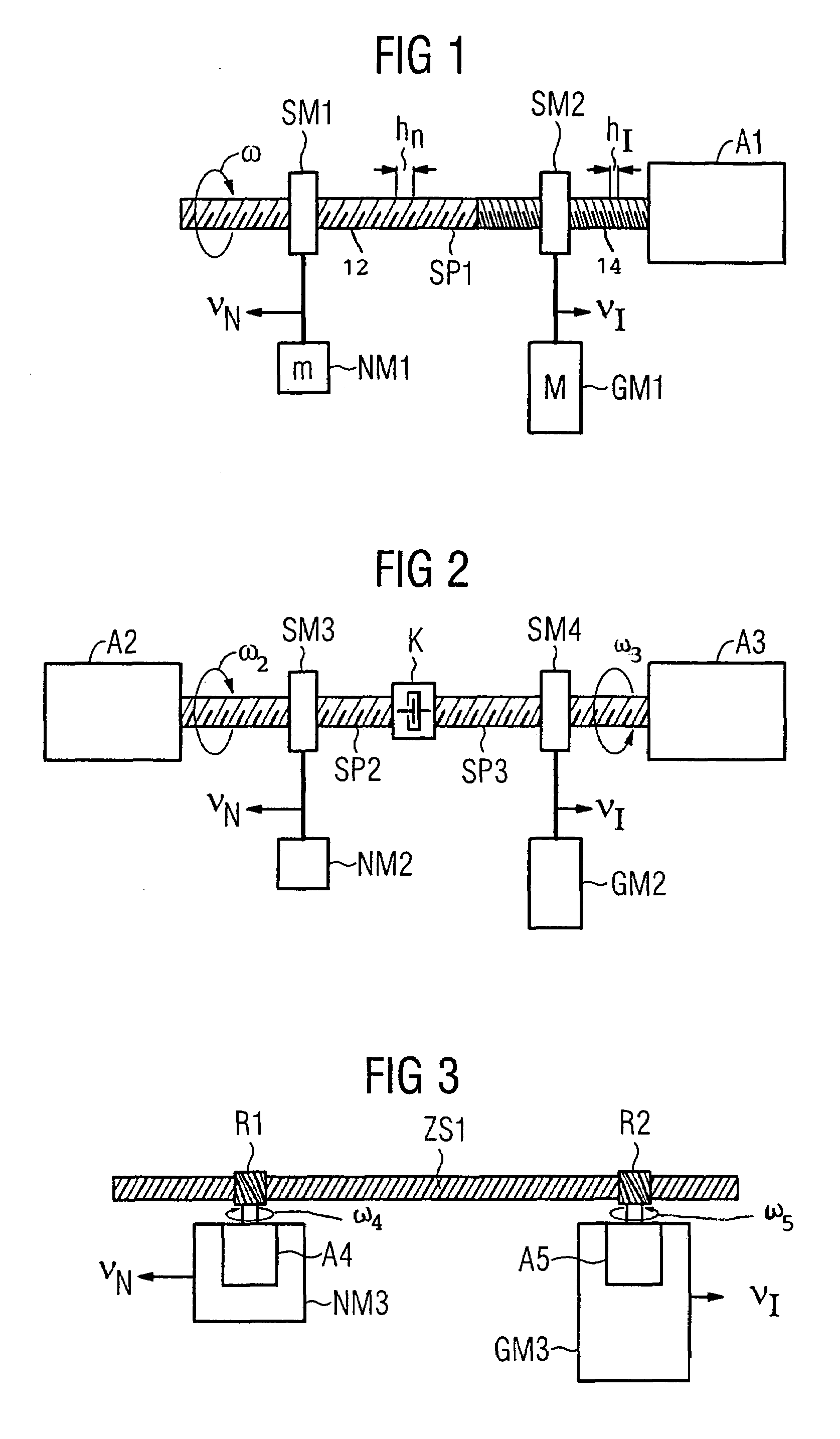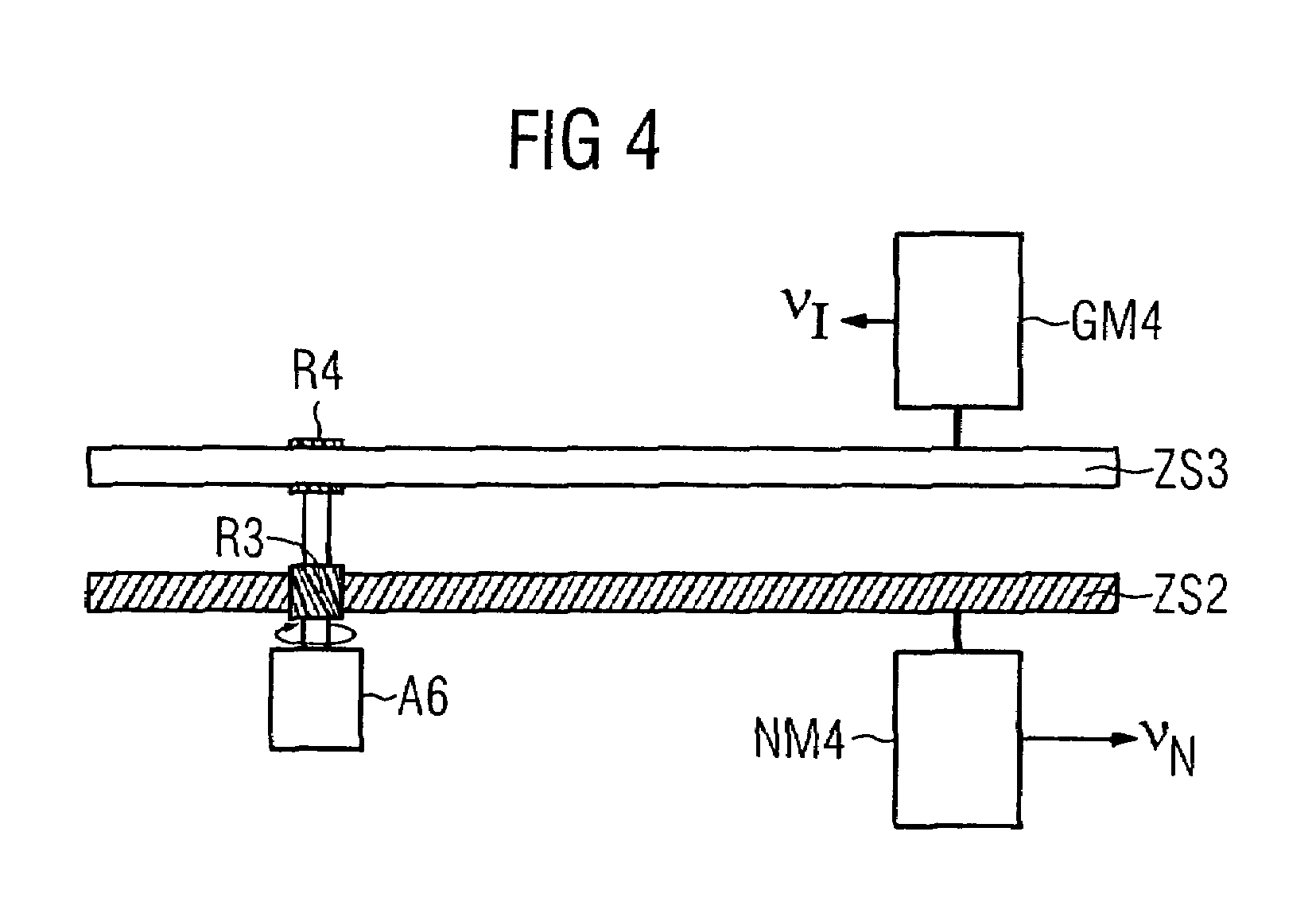Device for linearly moving a useful mass
a technology of useful mass and device, applied in the direction of hoisting equipment, gearing, manufacturing tools, etc., can solve the problems of loss of rigidity of the entire system, workpieces with low-quality surfaces, and inaccuracy of processing, so as to reduce the power requirement
- Summary
- Abstract
- Description
- Claims
- Application Information
AI Technical Summary
Benefits of technology
Problems solved by technology
Method used
Image
Examples
first embodiment
[0017]Turning now to the drawing, and in particular to FIG. 1, there is shown the invention with a single solid spindle SP1 coupled to a drive A1, in the present example a direct drive. The spindle SP1 can rotate, for example, with a speed ω in the rotation direction indicated by a curved arrow. The exemplary spindle SP1 has a left-handed threaded section 12 with a relatively high pitch hN and a right-handed threaded section 14 with a pitch hI that is comparatively smaller than the pitch hN. The threaded section 12 engages with a spindle nut SM1 that is connected with a useful mass NM1, as indicated by a heavy line. The useful mass NM1 has an exemplary physical mass m. In the right-handed threaded 14 of the spindle SP1 engages with a spindle nut SM2 that is mechanically connected with a compensating mass GM1 having an exemplary physical mass M. When the spindle SP1 rotates with the rotation speed ω, then the opposing lead of the spindle thread causes the spindle nuts SM1 and SM2 to ...
third embodiment
[0030]FIG. 3 shows the invention which employs a rack and pinion system instead of a spindle / spindle-nut system. This embodiment employs a stationary toothed rack ZS1 which engages with pinions R1 and R2. The exemplary useful mass NM3 is moved in a linear direction parallel to the rack ZS1 by a rotary drive A4 coupled to pinion R1 at a speed vN. The rotary drive A4 rotates with an angular rotation speed ω4, as indicated by a curved arrow. A compensating mass GM3 is moved on the rack ZS1 in the opposite direction of the useful mass NM3 by a rotary drive A5 coupled to pinion R2 at a speed vI. The rotary drive A5 rotates with an angular rotation speed ω5 in the opposite sense as the rotary drive A4. This arrangement eliminates or at least reduces undesired forces from being introduced by the toothed rack ZS into the machine. The equations for the physical motion listed above can be similarly applied to the rack / pinion configuration.
[0031]It will be understood that at least two racks ca...
PUM
 Login to View More
Login to View More Abstract
Description
Claims
Application Information
 Login to View More
Login to View More - R&D
- Intellectual Property
- Life Sciences
- Materials
- Tech Scout
- Unparalleled Data Quality
- Higher Quality Content
- 60% Fewer Hallucinations
Browse by: Latest US Patents, China's latest patents, Technical Efficacy Thesaurus, Application Domain, Technology Topic, Popular Technical Reports.
© 2025 PatSnap. All rights reserved.Legal|Privacy policy|Modern Slavery Act Transparency Statement|Sitemap|About US| Contact US: help@patsnap.com



